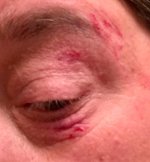Hoosierneals
New member
My kids were asking me about our new corn...does he have fangs, does he have teeth, how many, how big are they?, etc. I know he has teeth, b ut not much about them.
Luckily, Nitro has been sweet enough to not to do anything remotely like biting us in the last few weeks, so we haven't really gotten a good look in his mouth or any first hand experience.
I haven't found any good info on this in my internet or forum searches- anyone care to answer?
Thanks,
Sara
Luckily, Nitro has been sweet enough to not to do anything remotely like biting us in the last few weeks, so we haven't really gotten a good look in his mouth or any first hand experience.
I haven't found any good info on this in my internet or forum searches- anyone care to answer?
Thanks,
Sara

